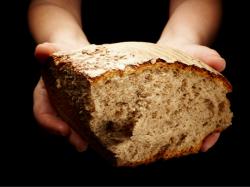Making Whole Wheat Bread Taste & Smell More Appetizing
January 11, 2013 | 2 min to read

The key to giving whole wheat bread a more appetizing aroma and taste may lie in controlling the amounts of a single chemical compound that appears in the bread, which nutritionists regard as more healthful than its refined white counterpart. That’s the finding of a new study in ACS’ Journal of Agricultural and Food Chemistry, which opens the door to making whole wheat bakery products more appealing to millions of people.
Devin G. Peterson and colleagues explain that whole wheat flour includes all three layers of the grain — bran, germ and endosperm — while refined flour is mostly endosperm. Whole wheat flour contains more fiber and compounds called phytochemicals, both of which can help reduce the risk of cancer, heart disease, diabetes and obesity. Despite wheat bread’s benefits, many consumers choose white bread because they prefer its taste and aroma. Peterson wanted to find out how one specific compound prevalent in whole wheat flour impacts its taste and aroma.
They focused on ferulic acid (FA), found mainly in bran. Scientists already knew that FA suppresses one of the critical components of baked bread’s aroma. When Peterson’s team added FA to white flour dough, the bread tasted and smelled like wheat bread. They linked those changes to reduced amounts of a number of compounds that help shape bread’s aroma. Understanding these chemical reactions could help bakers make healthier bread more appetizing, the study suggests.
To read the rest of the story, please go to: Journal of Agricultural and Food Chemistry
